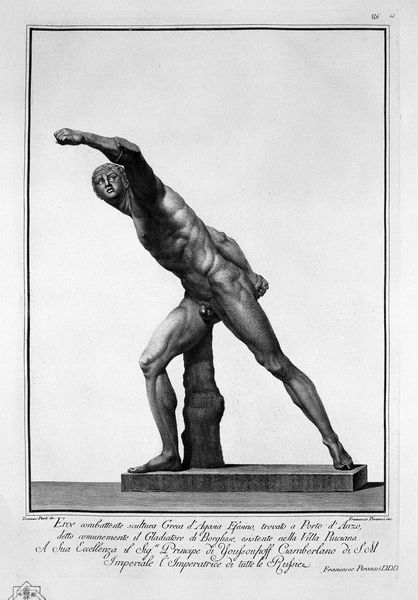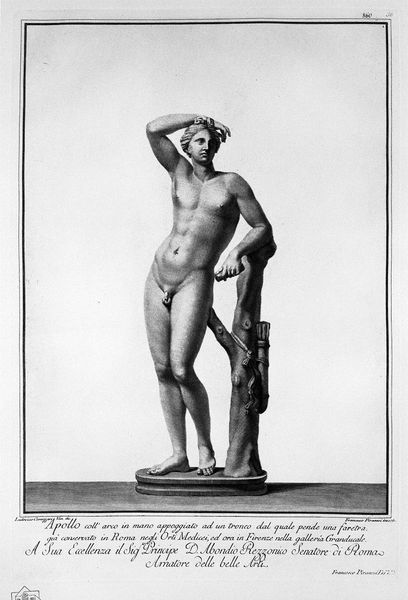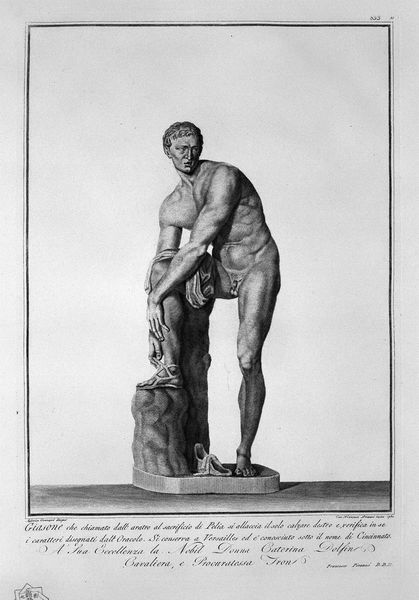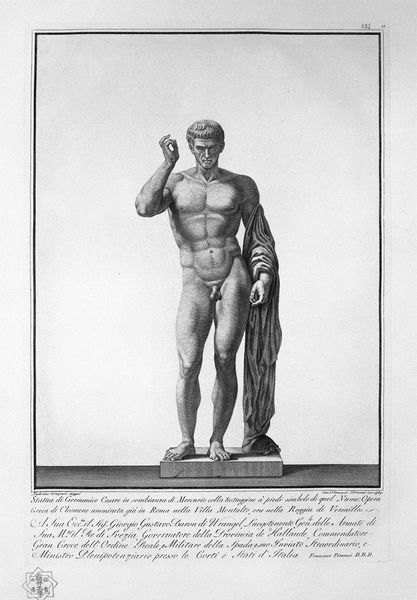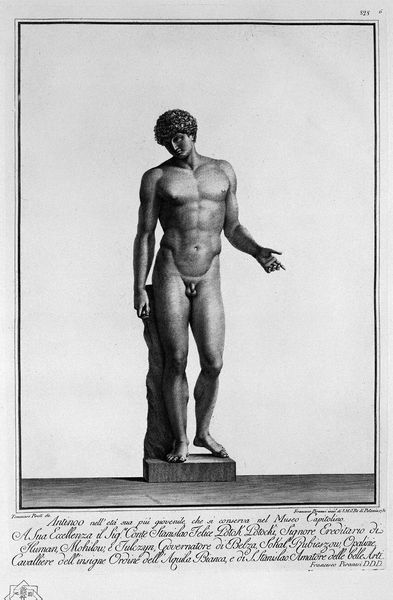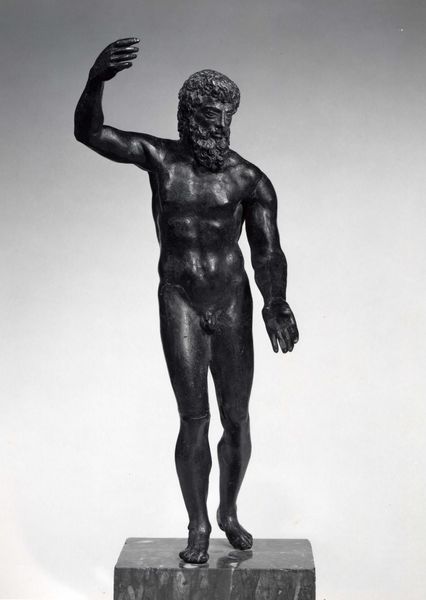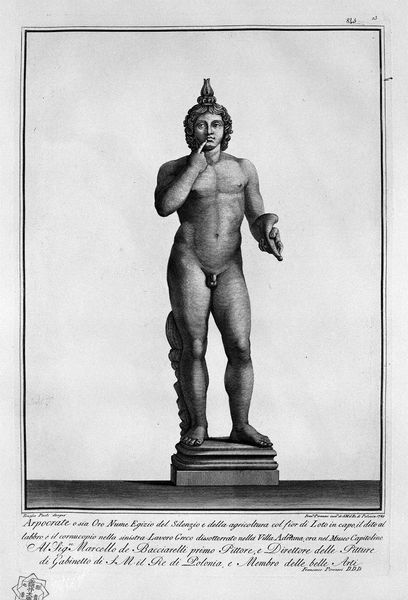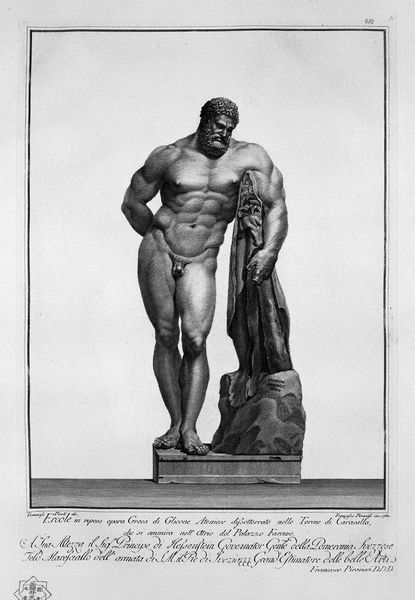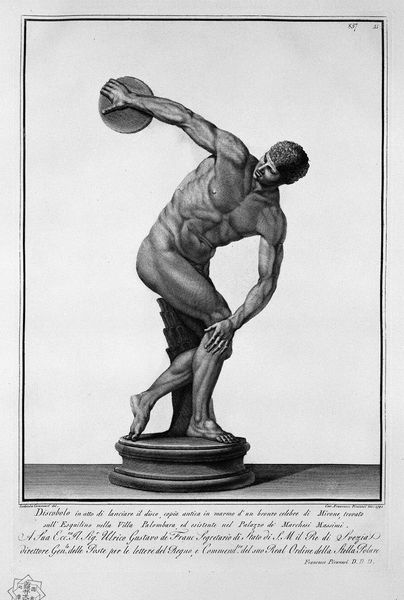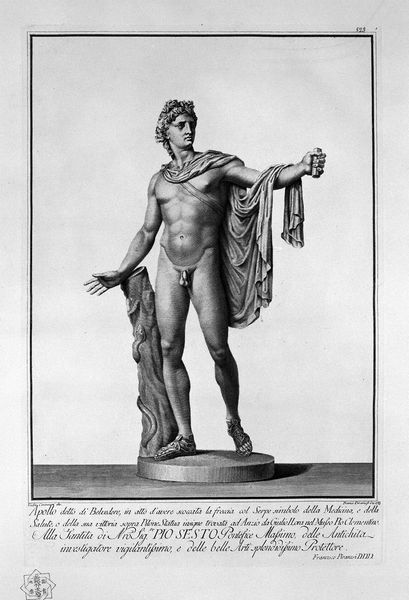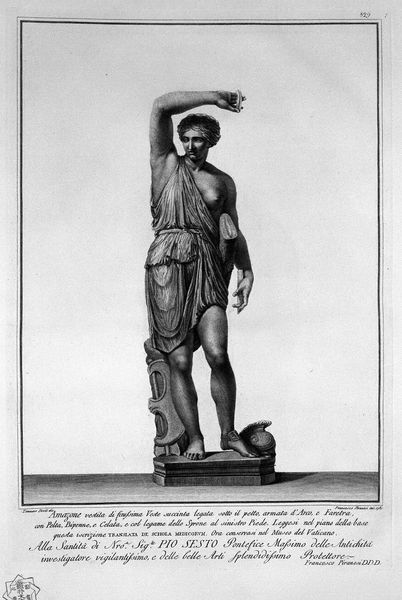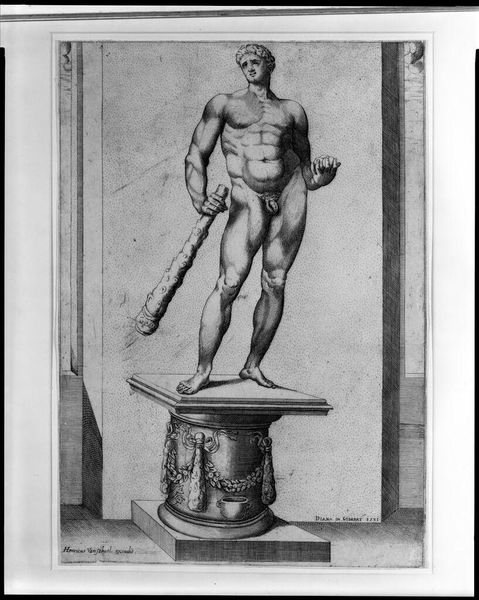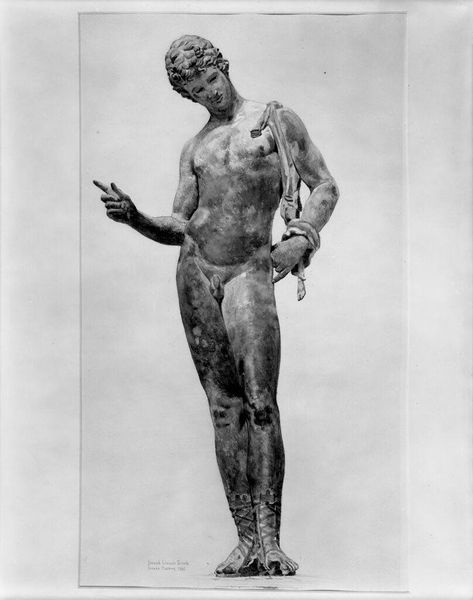
print, paper, sculpture, engraving
#
statue
#
neoclassicism
# print
#
landscape
#
classical-realism
#
charcoal drawing
#
figuration
#
paper
#
ancient-mediterranean
#
sculpture
#
mythology
#
nude
#
engraving
Copyright: Public domain
Editor: Here we have "Faun with Grapes," an engraving by Giovanni Battista Piranesi. It depicts a classical statue, stark and almost imposing. What jumps out at me is the figure's somewhat unsettling expression – can you tell me more about how it fits within its historical and cultural moment? Curator: Absolutely. What you're picking up on is the complex way in which Piranesi, in the late 18th century, is engaging with antiquity. This wasn't simply a straightforward revival. Archaeological discoveries, like this supposed Roman statue found in Hadrian's Villa, fuelled a fervent interest. Piranesi wasn’t just documenting; he was participating in the construction of a new vision of the classical past. How do you see this reflected in the print itself? Editor: I see! So, he’s presenting a version of the past, not necessarily the past as it objectively was. The exaggerated musculature and almost theatrical pose make it feel less about sober representation and more about dramatic effect. Was this typical for the time? Curator: Exactly! The art market was exploding, and these prints played a significant role in shaping taste and disseminating ideas about classical art. Wealthy Grand Tourists purchased prints like these to showcase their knowledge and sophistication. They became potent symbols of cultural capital. Piranesi's dramatic style served to capture attention and, dare I say, boost sales. Think of it as visual branding! Editor: So the prints were less about pure scholarship and more about contributing to a cultural narrative of prestige and taste? Curator: Precisely. Piranesi wasn't just showing us a Roman statue; he was showcasing Rome's, and by extension, his patrons’, cultural authority. Editor: I never thought about prints like this having that kind of impact! It really changes how I see the purpose of these works. Curator: That's the fascinating thing about historical context; it constantly shifts our perspective and opens up new avenues of understanding.
Comments
No comments
Be the first to comment and join the conversation on the ultimate creative platform.
